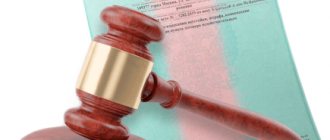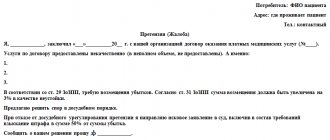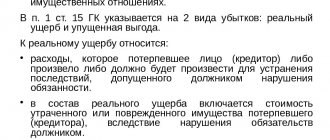How to write a claim for the return of goods or money?
- State your requirements clearly and clearly . Many consumers who are faced with a similar situation for the first time simply have no idea how to correctly write a claim for a defective product. This document should set out the essence of the specific requirements. The claim is made in any form, but despite this, it is necessary to have some idea of how to correctly write a claim for a product.
- The main points of a claim for a defective product. This document must necessarily consist of six main points. It must contain information about who is making the application and to whom. You must also provide detailed information about the product purchased or service ordered. Next, the author of the complaint outlines the essence of the problem. The next point is a description of the requirements that the consumer places on the seller.
- Filing a claim. The text that has already been compiled must be copied so that upon submission you will be given an acceptance mark. If the seller refuses to accept the claim or refuses to register the appeal, it is better to submit it through the Russian Post or courier services, of which there are currently many on the market for sending correspondence.
It is difficult to briefly explain how to write a claim for the return of goods, but all stated requests that the buyer makes to the seller must comply with the law. This document must list all complaints regarding the quality of purchased products, and also refer to specific provisions of the law. Therefore, the key point in the question of how to write a claim for a defective product is that only legal provisions should be the basis for initiating litigation.
What to do if the purchased product is of poor quality?
If a defect is discovered, the first thing you need to do is notify the seller. This is what claims for poor quality goods are for.
Next, it is necessary to record the fact that the seller received the claims. To do this, a claim for a defective product must either be delivered in person against signature, or a claim for the product must be sent by registered mail.
Next, you must meet the deadlines allotted for consideration of claims and require a written response to the claim for defective goods.
Very often, sellers do not want to take the matter to court, so filing a claim for a defective product in most cases leads to an exchange or refund.
If a response to a claim for a purchased product is not received, this means that the claim has been denied. How to be in this case? The only way to resolve the issue is to go to court.
Requirements of the buyer's claim regarding the quality of the goods
At the beginning, indicate what product and at what time you purchased from the seller, what exactly you were not satisfied with in the performance of the product or service provided. This information will help resolve the conflict situation. It is possible that the item is fully consistent with the model and declared value, you just haven’t figured out the controls or individual parts of the purchase.
If, after all, the product or service turned out to be of poor quality, then let’s determine what we have the right to claim in a consumer claim for a low-quality product or service.
A special section of the legislation, namely the Federal Law “On Protection of Consumer Rights,” states that if the buyer has purchased a low-quality product or service, he has the right to demand from the other party:
- replace a damaged or low-quality product (it must be of the same brand and model). This question often arises in the procedure for returning household appliances of inadequate quality to a store;
- if possible, eliminate all defects in the product or reimburse the consumer for the costs of eliminating the defects by a third party;
- refund of spent funds (the seller can also request a return of the damaged item).
If controversial situations arise between two parties to a conflict situation regarding the quality of an item or service being sold, the consumer must draw up an appeal and put it on paper. We will tell you how to write a claim for a replacement product in this material.
ATTENTION : if, in addition to the requirements for the product (service), in the future it is planned to file consumer penalties or a fine for non-satisfaction of requirements, then in this case the claim under the consumer rights protection agreement is mandatory, since it is from the date of its receipt that the penalties will be counted, and will also be resolved the possibility of a fine being imposed by the court.
How to properly file a claim for a defective product?
Indeed, we are often asked: how to correctly write a claim so that it is considered and satisfied without further litigation? Are there any tricks and subtleties in this matter?
We always answer that only a good and professional lawyer can cope with this work. It is necessary to have a good understanding of the laws, in particular the law on the protection of consumer rights, to correctly state your requirements, to show the seriousness of your intentions, if the seller does not want to satisfy the requirements without trial, to declare the possible negative consequences of trading in defective products, to initiate an inspection by Rospotrebnadzor and other regulatory authorities organs.
Response to buyer complaint regarding product quality
There is hardly a single company that has not encountered complaints from customers regarding the quality of the product. This is an unpleasant moment, but the main rule in such situations is to give a reasoned and reasoned answer. Management must, based on current legislation, either satisfy the stated requirements or give a reasoned refusal. The response to a claim about a defective product, with the consent of the seller on the contrary, must be immediately satisfied.
In modern society, it is an ingrained belief that the customer is always right. But, despite this, the seller has the exclusive right to protect his interests.
Upon receipt of a complaint, the company must act as follows:
- do not shy away from accepting a claim;
- fulfill the requirements if you fully agree with them;
- If you do not agree with the claim, conduct an examination of the goods and, if there are no grounds for satisfaction, give a written refusal.
The claim must be prepared competently, with references to the law. An incorrectly prepared response can lead to litigation. And this will adversely affect the company's reputation. In complex and controversial situations, it is better to contact our lawyers. They will advise you on the best course of action in your case, and will also competently and correctly prepare the necessary document.
As practice shows, the most common types of claims are:
- about low-quality products;
- about a refund for purchased products;
- elimination of product defects;
- exchange of goods of good quality.
Before writing a response to a complaint received, you need to understand whether it is justified and subject to satisfaction. The seller first checks the quality of the product. The buyer has the right to be present during the inspection.
If a dispute arises about the causes of a defect, an examination is carried out by a specialized organization. The seller pays for it. Based on the results, a conclusion is drawn up. During the inspection, the expert evaluates the product for compliance with standards and determines the presence of deficiencies and possible causes of their occurrence. If you discover shortcomings caused by the consumer (for example, the phone fell into the water after purchase), prepare a reasoned refusal with reference to Law No. 2300-1. A copy of the expert’s opinion must be attached to the response. In this case, the consumer must compensate the seller for the examination costs.
If the product is defective at the factory or as a result of improper storage or transportation, then the complaint must be satisfied, indicating the time frame when the product can be replaced with a good one.
The legislator has not established a specific form of response. But, as a rule, it is compiled as follows:
- the header indicates the full name, address and telephone number of the consumer and seller;
- a brief description of the requirements;
- a reasonable response to the complaint. It is necessary to clearly describe the position of the store;
- manager's signature;
USEFUL: the letter is written on the organization's letterhead.
What legislation protects consumer rights?
The main law that should be minimally known and used in the event of detection of a low-quality product for ordinary buyers is “On the Protection of Consumer Rights” dated February 7, 1992 No. 2300-1 (last amended July 18, 2021). It establishes consumer rights, mechanisms for their implementation and protection, and also regulates other relations between the consumer and the manufacturer (seller).
The concept of significant defects in a product, the specifics of considering consumer cases, and various ways to protect one’s rights are also discussed in Resolution of the Plenum of the Armed Forces of the Russian Federation dated June 28, 2012 No. 17 “On the consideration by courts of civil cases in disputes regarding the protection of consumer rights.”
All basic concepts are enshrined in the Civil Code of the Russian Federation. These are the concepts of rights and obligations, deadlines, liability, protection of property, contracts, returns, etc. And the main issues related to product defects are discussed in Art. 474-477 of this Code.
Refund of claim
When preparing a response to this kind of requirement, in addition to establishing its validity, it is necessary to find out from the accounting department about the receipt of funds to the company’s account.
The response to a complaint can be either positive or negative. If you refuse to return the amount of money, you must write a reasoned answer.
It is important to know that if the client does not have a receipt, this is not a reason to refuse to satisfy the complaint.
As in the case of replacing a defective product, the seller conducts an independent examination. The answer will be based on the results.
This situation differs from the requirement to replace a defective product in that the consumer wants to return the product and take back the money in order to purchase the same one, only in another store. Such a resolution of the case is not beneficial for the seller, since the store loses profit. If every client is important to you, then the refusal to refund money should be based on facts so that the buyer has no doubts that you are right.
IMPORTANT : a claim for a refund for a defective product must be satisfied, otherwise you risk receiving a 50% fine in favor of the consumer for violating his rights
Methods for protecting rights by consumers
To protect his violated rights, the acquirer has the right to use any of the methods proposed to him by law:
- replace the product with a similar one;
- replace with a similar product with recalculation of cost;
- demand a price reduction;
- insist on correcting defects at the expense of the seller;
- independently, or with the help of third parties, correct the defects and request compensation;
- refuse the purchase with a full refund of the purchase price;
- return funds in the amount of the cost of the goods at the time of return.
In this case, the consumer independently chooses one or another right at his own discretion. The seller’s demands for a specific method (for example, that the product must be exchanged for the same one, or must be sent for repair) are illegal.

If there are complaints about the quality of the goods, the buyer has the right to a refund
The buyer's claim for a refund for a defective product is the most common. But you can get back not only the money spent on the purchase. If, in the process of using the product, damage was caused to the property, health or life of the consumer, the selling party is obliged to compensate them in full. In addition, the seller must reimburse the costs of the examination, and it is also possible to recover a penalty from him if he did not comply with the deadlines and norms required by law.
ATTENTION! Please note that if it is proven that the defect occurred through your fault, the seller has the right to demand reimbursement of the costs of the examination from you.
Elimination of product defects upon claim
When a customer makes a request to eliminate defects in a product, the seller is obliged to accept the product for inspection and consider the complaint within a specified period of time. If it is legal, the store will correct the defects at its own expense. When it comes to durable products, the customer is provided with a similar product during repairs.
If defects are eliminated, the warranty period is extended for the duration of the repair.
After the repair, the seller is obliged to provide the consumer in writing with information about the date of treatment and transfer of the goods, elimination of the breakdown with a description of the defects and materials that were used to eliminate them and the date of delivery of the serviceable product.
If the examination of the product confirms the presence of damage caused by the client, then a written refusal is drawn up.
It is not uncommon for a consumer to demand a refund for correction of defects by third parties. In such cases, compelling reasons are required to grant the letter. The buyer must justify the presence of a defect due to the fault of the store, as well as confirm the costs of correction. Without all this, you can safely refuse the client. The answer must be in writing.
Returning an item of proper type upon claim
We all know that the consumer has the legal right to return a product of good quality without giving reasons. The return period is fourteen days. In this case, the seller is obliged to exchange the returned products for similar ones. A written response is not required for this purpose. The exchange takes place on the day of application. If the goods are unavailable, the buyer has the right to demand a refund. They must be returned to the client no later than 3 days from the date of receipt of the goods by the seller.
However, there are certain conditions for the goods subject to exchange:
- not used;
- has proper presentation;
- availability of documents confirming payment. But, in their absence, the client can refer to witness testimony;
- The return period has not expired.
If at least one of the above points is not met, the seller writes an official refusal indicating the reasons.
It is important to know that the legislator has approved a list of goods that cannot be exchanged or returned (for example, personal hygiene items).
Preparing a response to a claim is a painstaking job that requires experience, as well as knowledge of the law and technical documents on goods. The more competently the answer is presented, the higher the chances of resolving the dispute without trial.
Time limit for reviewing a complaint regarding product quality
When a seller receives a complaint, it must be responded to quickly. Either the requirements are satisfied, or a written refusal is given within the prescribed period.
- According to general rules, the period for reviewing a claim for a defective product is 10 days. The response is sent by mail with acknowledgment of delivery and a list of the contents. However, in certain cases a special period is provided. It all depends on the nature of the requirement. Thus, when claims are made to eliminate defects, the seller is obliged to eliminate them as soon as possible. However, by agreement of the parties, the period can be set to no more than 45 days.
- Requirements for replacing low-quality goods must be met no later than 10 calendar days from the date of issuance of the requirements. If additional product verification is necessary, the period is increased to 25 calendar days. If the store does not have the required product, the complaint must be resolved within 1 month.
- For the return of funds, the law establishes a ten-day period from the date of receipt of the complaint from the client.
ATTORNEY ADVICE: It is important to comply with the deadlines within which the seller must comply. After all, the law provides for liability for non-compliance. Thus, for delay in fulfilling an obligation, the offender pays 1% of the cost of the goods for each day of delay.










